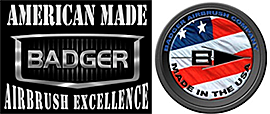
The Attacker developed from a Royal Air Force (RAF) fighter jet project, under Air Ministry Specification E.10 of 1944 (the E for experimental). The design of the Attacker used the laminar flow straight-wings of the Supermarine Spiteful, a piston-engined fighter intended to replace the Supermarine Spitfire, and what became the Attacker was originally referred to as the “Jet Spiteful”. The project was intended to provide an interim fighter for the RAF while another aircraft, the Gloster E.1/44 also using the Nene was developed. An order for three prototypes was placed on 30 August 1944, the second and third of which were to be navalised. An order for a further 24 pre-production aircraft, six for the RAF and the remaining 18 for the Fleet Air Arm was placed on 7 July 1945.
- Engraved panel lines
- Detailed cockpit and wheel wells.
- Turbine face detail.
- Optional position flaps, tail pipe.
- Optional ventral fuel tank fairing.
- 2-piece canopy and photo-etch parts.
- Decals and color painting guide for 2 Royal Navy aircraft: WP493 and WP496
- Includes instrument panel markings.
![]()
Here is an aircraft from the 50’s only a mother could find cute. It is the 1/48 Supermarine Attacker F.1 Fighter from Trumpeter kit # 02866. This model kit is comprised of 3 sprues molded in light gray, 1 clear, a small photo etch fret and decal markings. I wouldn’t call this necessarily a weekend kit, but it won’t be a lengthy build either.
The cockpit tub has some nice details out of the box. On the other hand the cockpit walls are represent by very thin vertical lines. In this case, I decide to use some Evergreen styrene strips to pump those wall ribs. As with some kits I have assembled from Trumpeter in the past and some in the queue, the ejection seat leaves a lot to be desired. The photo etch fret has some seat belts for the stock seat. But there’s little those PE belts will do for the stock seat. Trust me, I don’t suffer from chronic AMS, but I passed on the stock seat. Instead I used a Resin seat from Pavla Models (# S48025) that arrived from a dealer in UK.
There’s a slight problem with the ejection seat from Pavla Models. You’ll have to sand off a lot of the bottom and carefully all the way up to almost the cushion seat. I did a dry fit test with the stock seat and I had the same problem. The canopy wouldn’t fit in the closed position. I did cut the 2 tabs on the seat that meet on the cockpit tub ”floor” and noticed that if should I wanted to use the stock seat, I would have had to do further trimming on it as well.

The fuselage has nice receded lines. The lines however are on the shallow side leaving little room for washes or the weathering method of your choice. I don’t use surface primer on all my models and even if I did, I would think twice before spraying surface primer on this model. The molded lines can be really faint on a coat of primer. The model received a full coat of Tamiya XF-21 Sky which renders a pastel green used on British aircraft from that era. The top half was painted using Tamiya XF-54 Dark Sea Gray.
The fit on the fuselage halves is outstanding. With Tamiya Extra Thin Cement and no rush on this step, there will be little to sand and nothing to fill. I used some thin CA glue to cover a gap on the arrestor hook crevice area. The wheel wells have some nice rivet and mild structural detail. You can live happy with it out of the box or add some tubing/wiring to make it look busy.
Decal Markings:
There is a major drawback with the decal provided with this kit. The under wing marking numbers are considerably small. I’ve had to go with a decal sheet from Classic Airframes. Luckily I was able to find a sheet for .99 cents plus shipping at Sprue Brothers. Since the damage was done, I ordered an extra decal sheet. Here is the reference number from Sprue Brothers CAFD4102D. If you have this model kit in your soon to build queue, I’d order them before they are gone. I wanted to use the FB.2 decals but the correct canopy for this version is not provided with this kit.
I’m pleased with the final result of this build. I for the most part build my model kits out of the box. I knew that I was going to upgrade the ejection seat. The last few models in this range from Trumpeter usually requires this upgrade. On the other hand, the marking numbers are wrong for a OOB build so this could potentially stall or bring to a halt your build. I hope Trumpeter take note on this ASAP. I’m nitpicking here, but I’d love to see the FB.2 canopy included with this kit. Speaking of canopies, kudos to Trumpeter for protecting their canopies from damage during transport. Other kit manufacturers should take note too.
This is a nice kit at a fair price, too bad we have to incur in a extra expense to get the right decals. Other than that (ejection seat is at your discretion) I recommend it.
Review sample courtesy of my wallet.











































